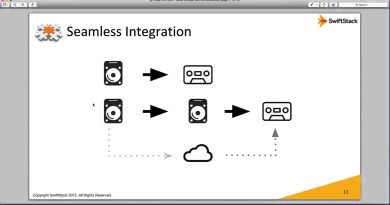How to Uninstall HTTPD in CentOS 7
Disclaimer/Disclosure: Some of the content was synthetically produced using various Generative AI (artificial intelligence) tools; so, there may be inaccuracies or misleading information present in the video. Please consider this before relying on the content to make any decisions or take any actions etc. If you still have any concerns, please feel free to write them in a comment. Thank you.
—
Summary: Learn how to remove the Apache HTTP server (httpd) from CentOS 7, step-by-step. Follow these instructions to cleanly uninstall httpd and its dependencies from your CentOS 7 system.
—
If you’ve decided to remove the Apache HTTP server (httpd) from your CentOS 7 system, whether for maintenance, troubleshooting, or other reasons, you’ll need to follow a few steps to ensure it’s done cleanly and completely. Here’s a step-by-step guide to help you uninstall httpd from CentOS 7:
Stop the httpd Service:
Before uninstalling httpd, it’s essential to stop the service. You can do this by executing the following command in your terminal:
[[See Video to Reveal this Text or Code Snippet]]
Disable httpd on Boot:
If you want to prevent httpd from starting automatically on system boot, you can disable it using the following command:
[[See Video to Reveal this Text or Code Snippet]]
Uninstall httpd:
Now that the httpd service is stopped, you can proceed with uninstalling it from your CentOS 7 system. Use the following command to remove httpd and its dependencies:
[[See Video to Reveal this Text or Code Snippet]]
This command will prompt you to confirm the removal of httpd and any associated packages. Review the list of packages to be removed and type ‘y’ to proceed with the uninstallation.
Remove Configuration Files (Optional):
By default, the yum remove command does not remove configuration files. If you want to remove configuration files along with httpd, you can use the following command:
[[See Video to Reveal this Text or Code Snippet]]
This will remove httpd configuration files without uninstalling the package itself.
Clean Up:
Once httpd and its associated packages are uninstalled, you can perform a clean-up to remove any remaining dependencies or unnecessary files. Run the following command:
[[See Video to Reveal this Text or Code Snippet]]
This command will remove any packages that were installed as dependencies but are no longer required.
Verify Removal:
To confirm that httpd has been successfully uninstalled, you can attempt to access your web server using a web browser or execute the following command to check the status of httpd:
[[See Video to Reveal this Text or Code Snippet]]
If httpd has been successfully uninstalled, you should receive a message indicating that the service is not found.
By following these steps, you can cleanly uninstall the Apache HTTP server (httpd) from your CentOS 7 system, ensuring that all associated files and dependencies are removed. Whether you’re performing maintenance, troubleshooting, or simply no longer need httpd on your system, this guide will help you remove it efficiently.
centos 7



